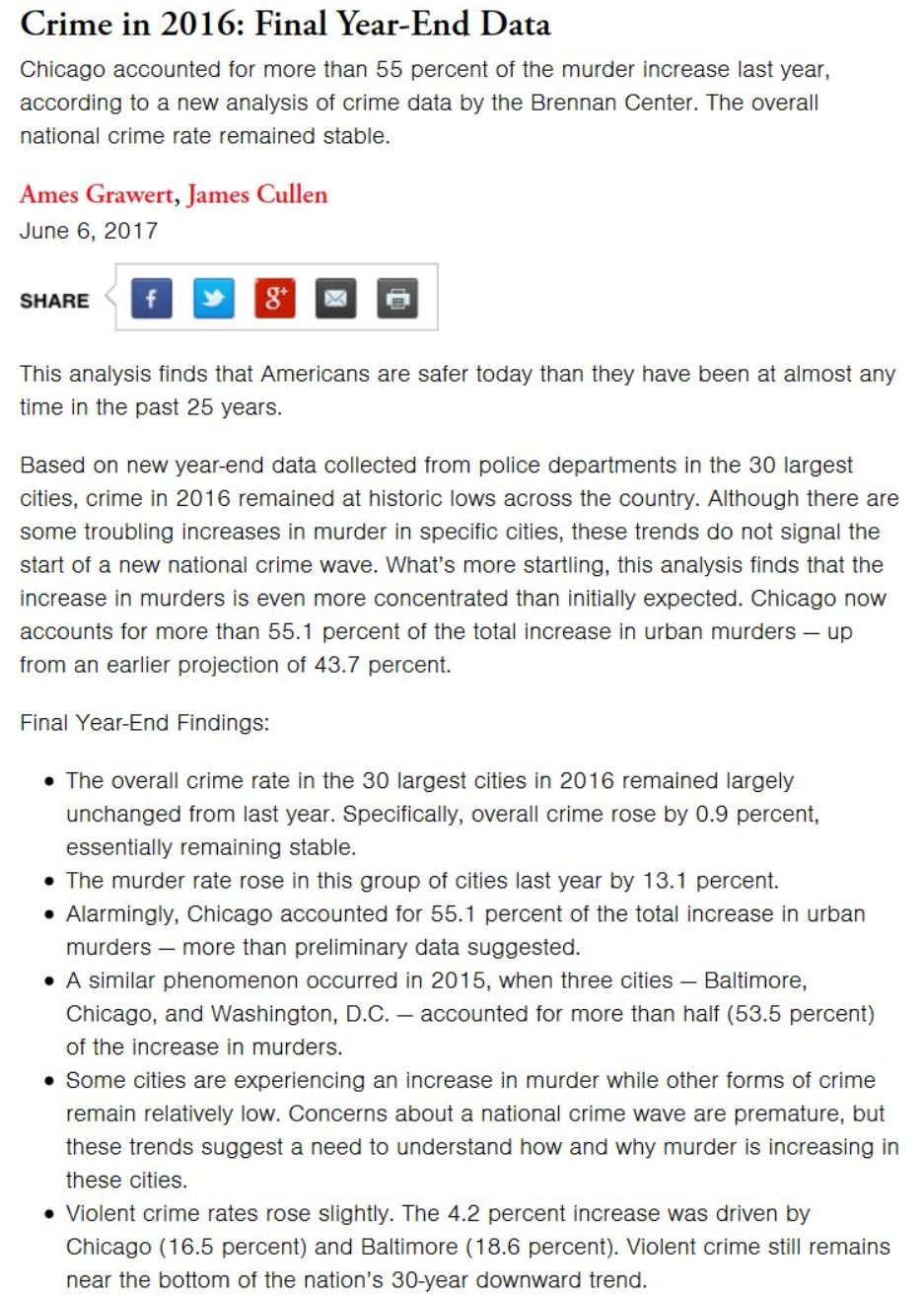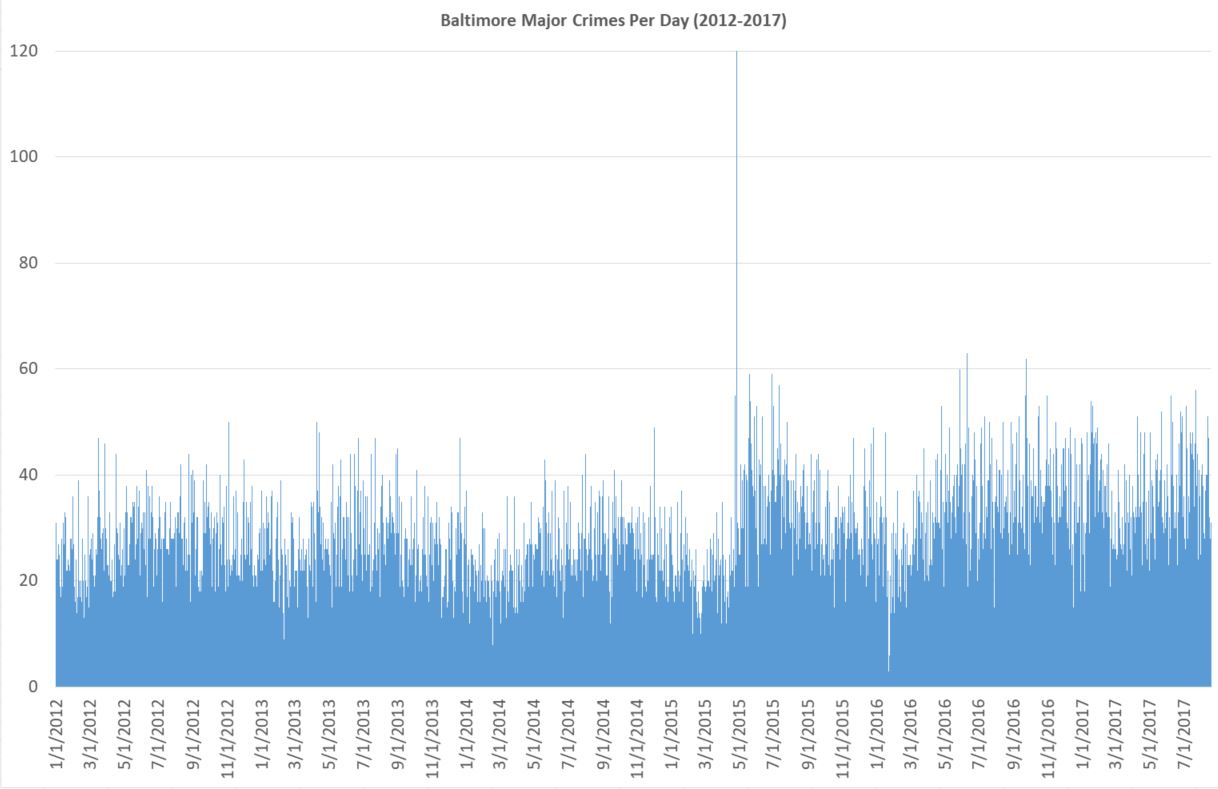So I’ve done a little work using the data from FatalEncounters.org on people shot and killed by police. Fatal Encounters is like the Washington Post database, but for adults. I combined/merged this with a city or police department’s population, number of cops, average number of murders in the jurisdiction (over 4 or 3 years), median household income, percentage Black, and…
Tag: for academics
More on state differences in cops shooting people
Inspired by some twitter threads — mostly this onewith Gary Cordner and this onewith Andrew Wheeler — I thought I’d look more at the cops getting killed as a factor in cops killing people. I like presenting this stage of research. In part because coming up with ideas and hypotheses and basic number crunching is what I like doing most.…
Pushing the Ideological Narrative
I updated the Brennan Center’s crime report from 2016, to update it for 2018. I still have this urge to show how goofy their methods are. Why? Because, the authors are still cited by reputable journalists as experts, despite never acknowledging or correcting their past efforts to intentionally mislead journalists and the public. It’s advocacy data-analysis. It’s unethical, wrong, and…
Still trying to explain…
What’s wrong with the Brennan Center’s analysis? There are many problems. But here are a few: 1) They take a non-random sample (which isn’t bad in and of itself) and then A) don’t tell the reader in the text and B) state conclusions as if the sample were a random sample (every data point equal chance of being picked), representative…
Data presentation and the crime rise in Baltimore
Data presentation fascinates me because it’s both art and science. There’s no right way to do it; it depends on both hard data, good intentions, and interpretive ability. Data can be manipulated and misinterpreted, both honestly and dishonestly. And any chart is potentially yet another step removed from whatever “truth” the hard data has. Where I’m going isn’t exactly technical,…
How to make people care about violence
Over at Nola Crime News, Jeff Asher tweeted this graphicjust now. Click on it; it moves! So while people are dying, I’m thinking about data presentation. There’s something about a moving line that may make one pay attention to dead people in a way that actual dead people don’t. Jeff’s graphic looks at Baltimore City shooting victims over the past…
“A Bird’s Eye View of Civilians Killed by Police in 2015”
More on the article in Criminology & Public Policy by Nix, Campbell, Byers, and Alpert. My previous post pointed out that if you use 2016 data rather than 2015 data, their conclusions would totally change. [Update: also see Nick Selby’s take on this. And David Klinger’s] How do we get data on police-involved shootings? Trick question. We don’t! A few…
What a difference a year makes…
There’s an article in Criminology & Public Policy by Justin Nix, Bradley Campbell, Edward Byers, and Geoffrey Alpert that has gotten some press: “A Bird’s Eye View of Civilians Killed by Police in 2015: Further Evidence of Implicit Bias” Although we could not determine whether officers were quicker or more likely to fire their weapon at minority suspects, we argue…
A Refresher on Regression Analysis
That’s all. And not a bad refresher at that, by Amy Gallo in Harvard Business Review: “You have to go out and see what’s happening in the real world. What’s the physical mechanism that’s causing the relationship? … A lot of people skip this step and I think it’s because they’re lazy. The goal is not to figure out what…
Just counting people killed by police won’t fix problems. We need better data.
I and Nick Selby wrote this one for the Washington Post.





